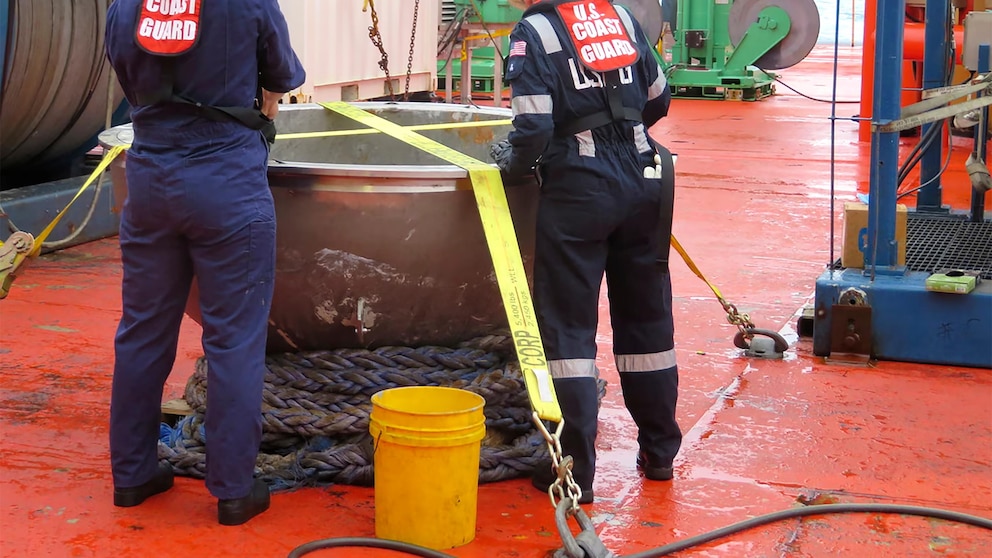The Coast Guard has recovered remaining debris, including presumed human remains, from a submersible that imploded on its way to explore the wreck of the Titanic, killing all five onboard, deep beneath the Atlantic Ocean’s surface, officials said Tuesday.
The Coast Guard said that the recovery and transfer of remaining parts was completed last Wednesday, and a photo showed the intact aft titanium endcap of the 22-foot (6.7-meter) vessel. Additional presumed human remains were carefully recovered from within Titan’s debris and transported for analysis by U.S. medical professionals, the Coast Guard said.
The salvage mission conducted under an agreement with the U.S. Navy was a follow-up to initial recovery operations on the ocean floor roughly 1,600 feet (488 meters) away from the Titanic, the Coast Guard said.
The new materials were offloaded at an unnamed port.
The Coast Guard previously said it recovered presumed human remains along with parts of the Titan after the debris field was located at a depth of 12,500 feet (3,800 meters).
Investigators believe the Titan imploded as it made its descent into deep North Atlantic waters on June 18.
I know the monies come from from different buckets and have wildly different orders of magnitude, but is there some sort of justification in continued recovery of a piece of shit sub full of the seemingly invulnerable ultra-rich that everyone knew was going to implode, versus, say, school lunches? Was there enough money to have paid SAT prep tutors in a handful of inner city schools in Chicago instead of dragging up the remains of one of the stupidest and most entitled public displays of sheer idiocy on the past handful of years?
Coast Guard is made to do salvage missions, many more important than this one. The cost of doing a mission like this is not large compared to the cost of acquiring and maintaining the equipment and crews necessary. It’s good practice, good PR, and may give technical insight that will be useful to civilian or military engineers working on deep-sea submersibles.
Basically, we’ve already spent 99% of the money necessary before even considering whether or not to undertake a particular salvage mission. You already bought the car - what’s a drive down to the next state over, really? Gas and some wear and tear?



